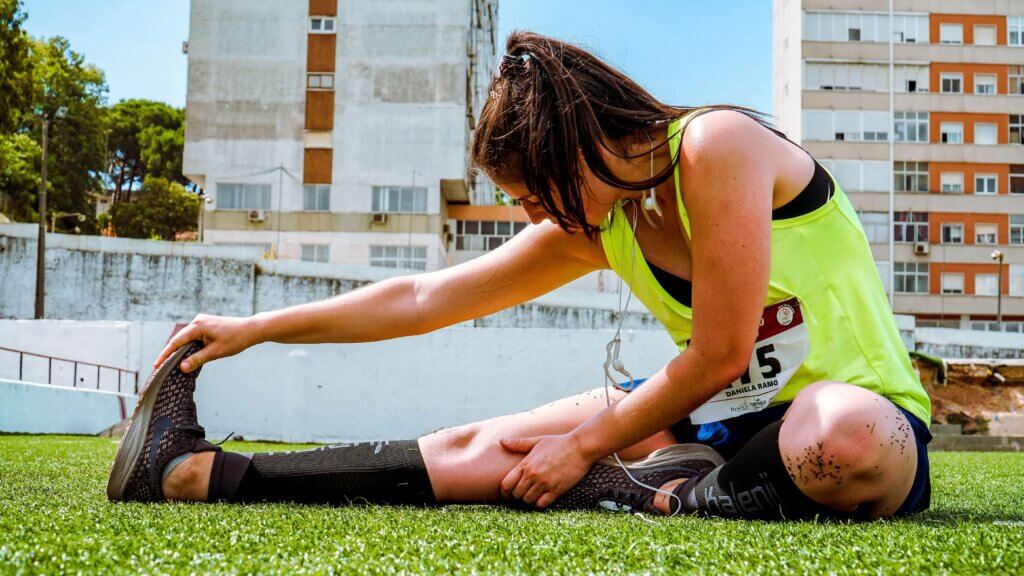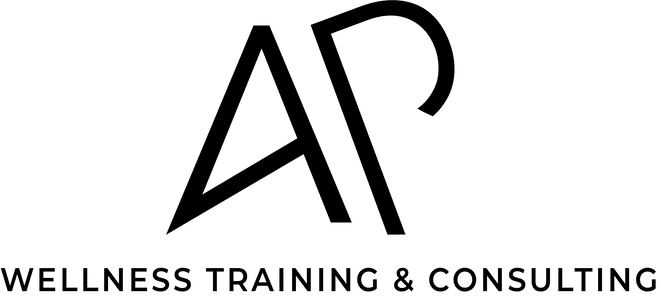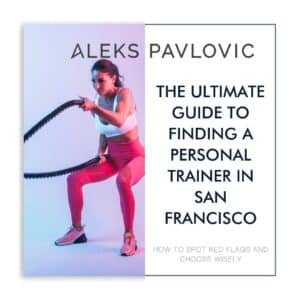Often when we plan workouts on our own, we tend to choose exercises that we enjoy, or that help us meet specific fitness goals. If you are training for a race, for example, you’ll probably focus on cardio training to build endurance and lower body strength for extra power. There’s nothing wrong with planning workouts you enjoy or focusing on a particular type of fitness. Still, you may end up neglecting other areas that are equally important for your health and mobility. Your fitness routine should include these four main types of exercise on a regular basis—aerobic, strength, flexibility, and balance.
At AP Wellness Training & Consulting, I offer personal training and nutrition coaching in San Francisco. I also have online services available nationwide. My mission is to help individuals who want to develop healthy habits but don’t know where to start. So, keep reading to learn about what you should include in your workout routine, and reach out if you need help developing a balanced fitness plan.
Strength Training

Strength training is a type of exercise that uses resistance to build muscle and bone density. This can be done with weights, bodyweight exercises, or resistance bands. Strength training is important for people of all ages, because it helps build strong muscles and bones, which can reduce the risk of injuries. Especially as we age, we start losing muscle tissue, so it’s important to spend some time building and maintaining lean muscle mass.
Plan to include strength training in 2-3 of your weekly workouts.
Strength Training Benefits
Here are just a few benefits you can see from regular strength training sessions:
- Builds muscle mass
- Increases strength and power
- Improves bone density
- Prevents age-related muscle loss
- Reduces the risk of injuries
- Improves posture
Examples of Strength Training Exercises
You can do many different strength training exercises, and the best exercises for you will depend on your fitness goals. If you’re new to strength training, start with simple exercises that use your bodyweight or basic equipment like dumbbells, resistance bands, and kettlebells. Then, as you get stronger, you can move on to more challenging exercises that target specific muscle groups.
Some examples of strength training exercises include:
- Push-ups
- Pull-ups
- Squats
- Lunges
- Calf raises
- Bicep curls
- Triceps dips
Aerobic Fitness
Aerobic fitness is any activity that increases your heart rate and breathing and means “with oxygen.” This type of exercise requires your body to replenish oxygen in your muscles while sustaining movement. Anaerobic exercises like sprints or weightlifting require short bursts of energy and use the oxygen already stored in your muscles. Aerobic activities, also known as “cardio,” test your endurance and are a great way to improve your overall health.
Aerobic Exercise Benefits
Regular aerobic exercise can help to:
- Reduce the risk of heart disease
- Lower blood pressure
- Improve cholesterol levels
- Reduce the risk of stroke
- Reduce the risk of type 2 diabetes
- Reduce stress and anxiety
- Improve sleep quality
Aerobic Exercise Examples
If you’re new to aerobic exercise, start slowly and gradually increase the intensity of your workouts. A good goal is to aim for 30 minutes of aerobic activity most days of the week. Here are a few ideas to get you started:
- Running
- Walking
- Swimming
- Hiking
- Biking
- Jumping rope
Whatever type of aerobic exercise you choose, be sure to warm up before you start and cool down when you’re finished. And remember, listen to your body – if you start to feel dizzy or short of breath, slow down or stop altogether. By incorporating aerobic exercise into your workout routine, you’ll be doing your heart – and your whole body – a favor.
Flexibility

Flexibility is the ability to move your joints and muscles through a full range of motion. It’s important to maintain flexibility as you age, because it can help reduce the risk of injuries, improve your range of motion, and make everyday activities easier. There are many different ways to improve flexibility, including stretching, yoga, and Pilates.
Flexibility Training Benefits
With regular flexibility training, you can:
- Improve your range of motion
- Reduce the risk of injuries
- Relieve pain and stiffness
- Increase your blood flow and circulation
- Improve posture
- Enhance mental well-being
Flexibility Exercises
There are a variety of ways to add flexibility training to your routine. For instance, you can do some simple stretches before and after your workout. Or, you can dedicate a few minutes at the beginning or end of your session to dedicated flexibility work.
Try to focus on stretching the muscles you use most often during your sport or activity. For example, if you’re a runner, you’ll want to focus on stretches that target your calves, hamstrings, and hips. By targeting the muscles that are most susceptible to injury, you can help reduce your risk of developing aches and pains down the road.
Here are a few stretches to get you started:
- Hamstring stretch: Lie on your back with one leg straight and the other bent at the knee. Use a towel or strap to loop around the arch of your raised foot, and gently pull until you feel a stretch in the back of your leg. Hold for 30 seconds, then switch sides.
- Calf stretch: Place your hands on a wall and step back with one leg, keeping the heel of your back foot down and the toes pointing up. Lean into the wall until you feel a stretch in your calf. Hold for 30 seconds, then switch sides.
- Hip flexor stretch: Kneel on one knee with your other foot planted in front of you. Lean forward until you feel a stretch in the front of your thigh. Hold for 30 seconds, then switch sides.
- Shoulder stretch: Reach one arm across your body and grab onto the opposite shoulder. Use your other hand to gently pull the raised arm closer to your chest until you feel a stretch in your shoulder. Hold for 30 seconds, then switch sides.
Remember, it’s important to warm up before stretching, and to breathe deeply as you hold each stretch for 20-30 seconds. You should feel a gentle stretch, not pain. If you start to feel pain, ease up on the intensity of the stretch.
Balance Training

Balance is the ability to maintain your center of gravity over your base of support. It’s an important skill to have, because it helps you stay upright and avoid falls. There are many different ways to improve your balance, including yoga, tai chi, and Pilates
Benefits of Good Balance
Some of the benefits of balance training include:
- Reduced risk of falls
- Improved posture
- Increased stability
- Enhanced athletic performance
Exercises for Balance and Coordination
You can do many different exercises to improve your balance and coordination. Here are a few examples:
- Single-leg balances: Stand on one leg with your eyes open, then close your eyes and hold for 30 seconds. Repeat on the other side. As you get better at this exercise, try holding a dumbbell in one hand to make it more challenging.
- Walking heel-to-toe: Place your heel just in front of your toes, then step forward with the other foot. Repeat, making sure that you land heel first each time. You can also try this exercise with your eyes closed to really test your balance.
- Use a Bosu Ball: A Bosu ball is a half-round exercise ball that helps improve balance and coordination. To use it, stand on the flat side with your feet shoulder-width apart. Then, try doing some simple exercises like lunges or squats. As you get more comfortable, you can add in more challenging moves like single-leg balances or push-ups.
Remember, it’s important to progress slowly with these exercises and focus on good form. Frist, start with 2-3 sets of 10-15 repetitions, then gradually increase the intensity as you get stronger.
Get a Custom Fitness Plan with AP Wellness Training & Consulting
If creating a fitness plan that balances these four types of exercise feels overwhelming, reach out to me. I create custom workouts that not only promote overall fitness, but target your unique goals and areas of challenge. If you don’t live in San Francisco, I offer online training with workouts that you can complete at home or at the gym of your choice. Ready to start your fitness journey? Schedule a free consultation today!






